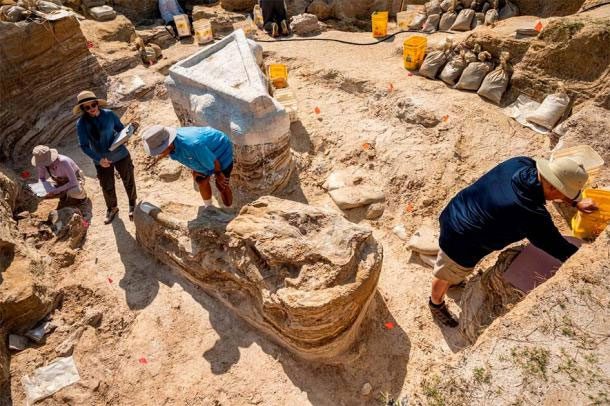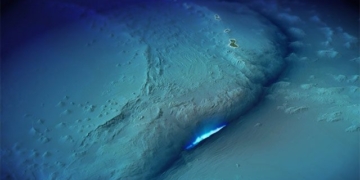A graveyard filled with giant monsters has just been unearthed in Florida, USA, featuring the largest known skeleton of a bizarre “gomphothere,” which could weigh up to 6 tons.
While digging along the dry riverbed in Northern Florida, a research team from the Florida Museum of Natural History discovered fossilized bones of several elephant species that lived during the Middle Miocene, a geological period spanning from 23 million to 5.33 million years ago.

The magnificent skull of the creature unearthed from the riverbed – (Photo: FLORIDA MUSEUM OF NATURAL HISTORY).
What stands out the most is that the dominant species in this elephant graveyard is the gomphothere, a “devilish-faced” creature that roamed what is now Florida in large numbers around 6 million years ago.
These extinct giants weighed between 4 to 5 tons, nearly the size of modern African elephants, but their faces are reminiscent of descriptions found in monster movies: In addition to a pair of large, pointed tusks extending from the upper jaw, they also had a shorter pair of tusks from the lower jaw that curved in a rather frightening way.

The reconstructed skeleton of a gomphothere with a fearsome face – (Photo: AMERICAN MUSEUM OF NATURAL HISTORY).
According to Ancient Origins, the large-scale “Montbrook fossil excavation” was quickly organized by the museum with the participation of paleontologists and numerous volunteers. Montbrook is the name given to the fossil-rich area that includes this monster riverbed.
Among them, Mr. Dean Warner, a retired chemistry teacher, made a life-changing discovery: The astonishing skeleton of the “great gomphothere.”
The creature was found in a position akin to “lying down and dead”, with the bones remaining in their original position as if carefully buried. It is an adult gomphothere, dated to be up to 6 million years old, standing 2.4 meters tall, and the length of its skull, including its tusks, exceeds 2.7 meters.
This “great gomphothere” is larger than any other specimen of its kind recovered from anywhere in the world. It is described as being as large as an African elephant – a creature weighing over 6 tons, with a body length that could reach 4 meters when fully grown.
It is unclear why so many gomphotheres, along with various other species — including different elephants and unrelated species — congregated in the riverbed area of Montbrook. However, researchers have a hypothesis.
Similar to modern elephants, ancient elderly giants may have intentionally lain down near their familiar water sources. After centuries, floods would have deposited the remains of other species piled on top, creating a natural, diverse, multi-layered graveyard.


















































